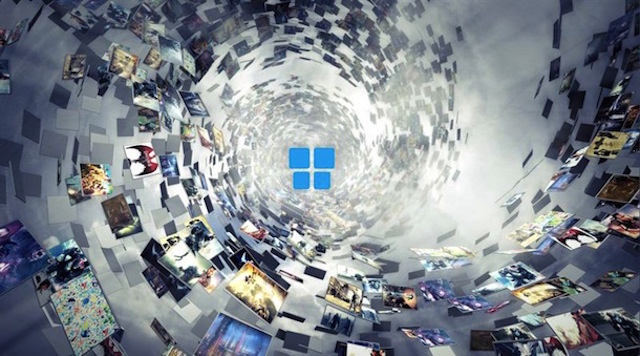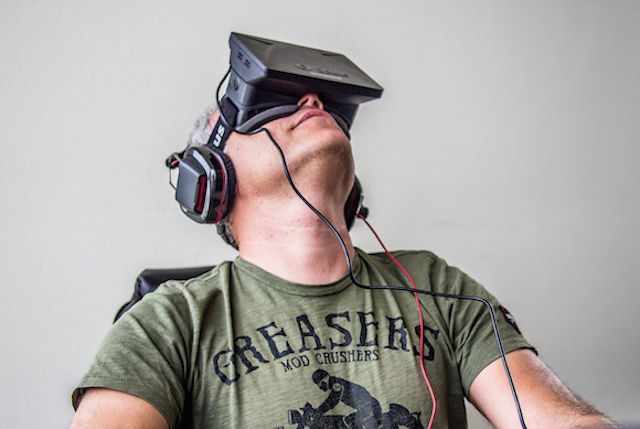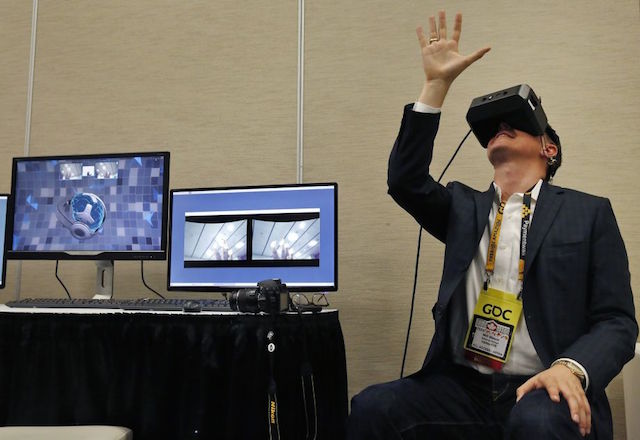Video games have come a long way since Pong. Trends have come and gone, and companies have been left in ruin, but others have struck gold with new and innovative ideas. Video games have become a multi-billion dollar industry, challenging even Hollywood for top dog status. With all the successes and the failures in its short history, the question arises: what’s next for the video game industry?
10. More Streaming
Many heavyweight companies in the video game industry, including NVidia, PlayStation and Microsoft, believe that the future of gaming involves streaming and cloud based games. They point to the increased importance of the cloud in mediums like TV and music, and are running to get on the bus. The problem there is video games are more complicated than streaming a song or a movie. In fact, some people believe that games will always be more complicated than streaming technology.
But others believe continued developments in fiber optic cables will enable streaming to work in the gaming industry. There’s a strong belief that in the near future most people won’t own games, instead they will either rent them or play them on a subscription based service, similar to Netflix. This would make games more episodic, with new levels or storylines released over time. Basically, these people believe that downloadable content is the future of the industry. It will also cut down on production costs, and stores like GameStop and EB Games will go the way of Blockbuster Video as physical games go the way of the VHS tape.
9. Secondary Screens
Secondary screens aren’t exactly new. Nintendo has been using the technology since releasing the Nintendo Dual Screen in 2004. In 2012, they showed further commitment to secondary screens by releasing the Wii U to compete against PlayStation 4 and Xbox One. A main difference between Wii U and its competitors is that there is a controller that has a touch screen in the center, making it a tablet and a controller in one.
This trend seems to be picking up steam. Tablets and phones, along with touch screen controllers, will change gameplay. There are apps on the way that will enable gamers to interact with a game, even if they aren’t at a console. One thing you won’t see is too much action happening on both screens, because that would basically be too much for the human brain to register. Instead, the second screen will give a player more control over the game. For example, if you were playing a football game you could set your players on the line of scrimmage with more ease. Another example would be the second screen becoming a permanent inventory display in an RPG or action game.
8. Virtual Reality
Virtual reality systems have been around since the 1980s, but at the time, the graphics just weren’t good enough to make it an immersive game format. With new developments in every facet of video games, virtual reality is starting to make a comeback. The most well known and hotly anticipated form of VR gaming is the Oculus Rift. The virtual reality headset has two low persistence OLED screens and the makers claim the graphics are so clear it’s just like putting on a pair of glasses.
Some of the criticism of the Rift is that the headset won’t be wireless, and that use of the Rift relies on owning an Xbox One. It will also have a controller for each hand, as opposed to a single traditional controller. Finally, while gamers will be able to play Xbox classics like Halo on the Rift, you won’t get the full VR experience. Instead, it be like playing a game on a very big TV.
At the time of this posting, Oculus hasn’t released the specifications or the price for their headset, but it is expected to hit the market in early 2016. Other competitors in the VR revival include Sony’s Project Morpheus, Samsung Gear VR and the HTC Vive.
7. Photorealism
A noticeable difference between generations of game consoles is the rapid improvement in graphics, as they become more and more life-like. This trend is expected to continue until its logical end – video games will be indecipherable from real life. The major hurdle to this is something called the Uncanny Valley, which is the theory that the more life-like human reproductions get, the more people will notice small differences.
For example, skin has subtleties that are difficult to replicate, like when you hold your hand up to the light and it glows red around the edges. When it comes to hair, individual strands are time and labor intensive, and even then the movement is nearly impossible to recreate. Finally, there is the problem with the eyes. If something is off about them, it can be off-putting to people and, frankly, more than a little creepy and lifeless.
However, computer graphics giant NVidia believes they’ll soon get over these seemingly small hurdles, which will allow them to cross the Uncanny Valley and video game graphics will look truly life-like.
6. VirtuSphere
A big problem with most virtual reality systems is that they’re designed for stationary use. After all, visors need to be connected, so if you were to try to get up and punch that digitally rendered orc chances are you’d break either the system or yourself. This is where the VitruSphere comes in. It’s a 10-foot sphere that rotates, similar to a giant hamster ball. The person inside the sphere can run and jump, and the video game will record the same dimensions. It’s an immersive, full body VR experience that goes well beyond just the usual eyes and ears immersion offered by something like the Rift. Basically, it’s like Xbox Kinect, only the game is all around you.
Currently VirtuSphere is being used to train people in the military. If you would like one for yourself, they cost about $100,000 to install. Just a drop in the virtual bucket, really.
5. Augmented Reality
Augmented reality is a different take on gaming, using your actual surroundings to create a virtual game around you. Augmented reality uses the camera on a tablet or a mobile device, showing graphics on the screen using the objects and walls in the field of view to give you an entirely unique gaming experience. For example, let’s say you were using a tablet and focus on a wall with a window. On the tablet, you would see bad guys burst through those windows, and and when you raise your arm into frame, you’d discover you’re holding a big freaking gun to ice the intruders.
A notable example of augmented reality is Google Glasses, which were met with so much resistance that, for now, production has stopped as Google goes back to the drawing board. Experts think that augmented reality will be more successful when it’s used with handheld devices such as smart phones and tablets at first, before eventually becoming part of technologies like virtual reality helmets.
4. Holograms
In 1991 Sega released what’s considered the first holographic game, called Time Traveler. It was an arcade game that used recordings of real actors on a green screen instead of computer generated graphics. The effect of the holograms was an optical illusion that used a large curved mirror and a CRT television set. While it was successful, the concept never really took off.
That brings us to zSpace, which uses 3D virtual reality. When you look at the platform, it looks like a 2D tablet that’s about the size of an elementary school desk. But if you put on special glasses, objects appear in 3D, allowing you to unleash your inner Tony Stark and interact with the holograms.
zSpace has a lot of practical applications that go beyond entertainment. Doctors can get a 3D model of a heart to examine, without ever touching the patient. It also has gaming applications, though even the most basic version of the machine comes with the hefty price tag of about $4,000.
3. Brain Powered Games
Video games are a combination of reaction time, problem solving skills, and dexterity. In order to move away from dexterity skills, a company called NeuroSky created a helmet that controls games by using electroencephalogram (EEG) and electrocardiogram (ECG), which are how brain waves are read. For example, they have a game called “Throw Trucks With Your Mind!” Which, we’re going to be honest here, sounds like the most amazing game ever created.
When wearing the headset, you can do exactly as the title implies and throw computer-generated trucks like you were Magneto on a rampage. The problem is that you need to have a clear mind and concentrate. Right now, it appears that this system works better on children than adults, because adults have a tendency to have more on their mind. In fairness, it’s hard to concentrate when you’re monologuing about your evil intentions while throwing a Mack Truck like its a beanbag.
2. Brain Powered Virtual Reality with Motion Sensors
A company called MindMaze is beginning to utilize a combination of several technologies we’ve already talked about. Using both virtual and augmented reality along with motion capture and brain wave reading technology, they’re creating the most immersive game play experience imaginable. Basically, if you’ve ever read the book Ready Player One, that’s what they’re trying to make a reality.
Originally MindMaze designed a system for the medical field to help people with neurological deficits. Their first venture into the gaming realm is MindLeap, a VR helmet and 3D motion capture camera that works on both PlayStation and Xbox. In early 2015, MindMaze said they would release the engine to developers, and that head mounted MindLeaps and 3D motion capture cameras will be available for purchase in the coming months.
The creators claim that it’s so immersive because of the technology they use for neurological readings. Before someone moves, the message starts in the brain and takes a few milliseconds for the limb to respond. MindLeap takes advantage of these milliseconds to create a system that responds fluidly when someone moves, creating one of the most immersive game platforms ever.
1. Microsoft’s RoomAlive
Games on consoles can be an immersive experience, but generally you’re still just playing a game on a television. Microsoft’s RoomAlive looks to make use of more space than just a television. Using the Kinect, it takes readings of the geometry in the room and, using a projector aimed at the wall behind the TV, makes the entire wall part of the game.
For example, it can change the look of your whole room by changing what you see on the wall behind the television. By doing this it can extend the field of vision, allowing the game to expand beyond the screen. Not only will it make your whole wall a TV, but the RoomAlive can also induce the feeling of motion and distort your reality. It’s been compared to the Holodeck in Star Trek, though obviously a more limited version that only alters a portion of the room.
Currently RoomAlive is at the proof of concept stage. It’s unclear when the technology will be available for consumers because of how expensive it is.
Robert Grimminck is a Canadian freelance writer. You can friend him on Facebook, follow him on Twitter, or visit his website.








